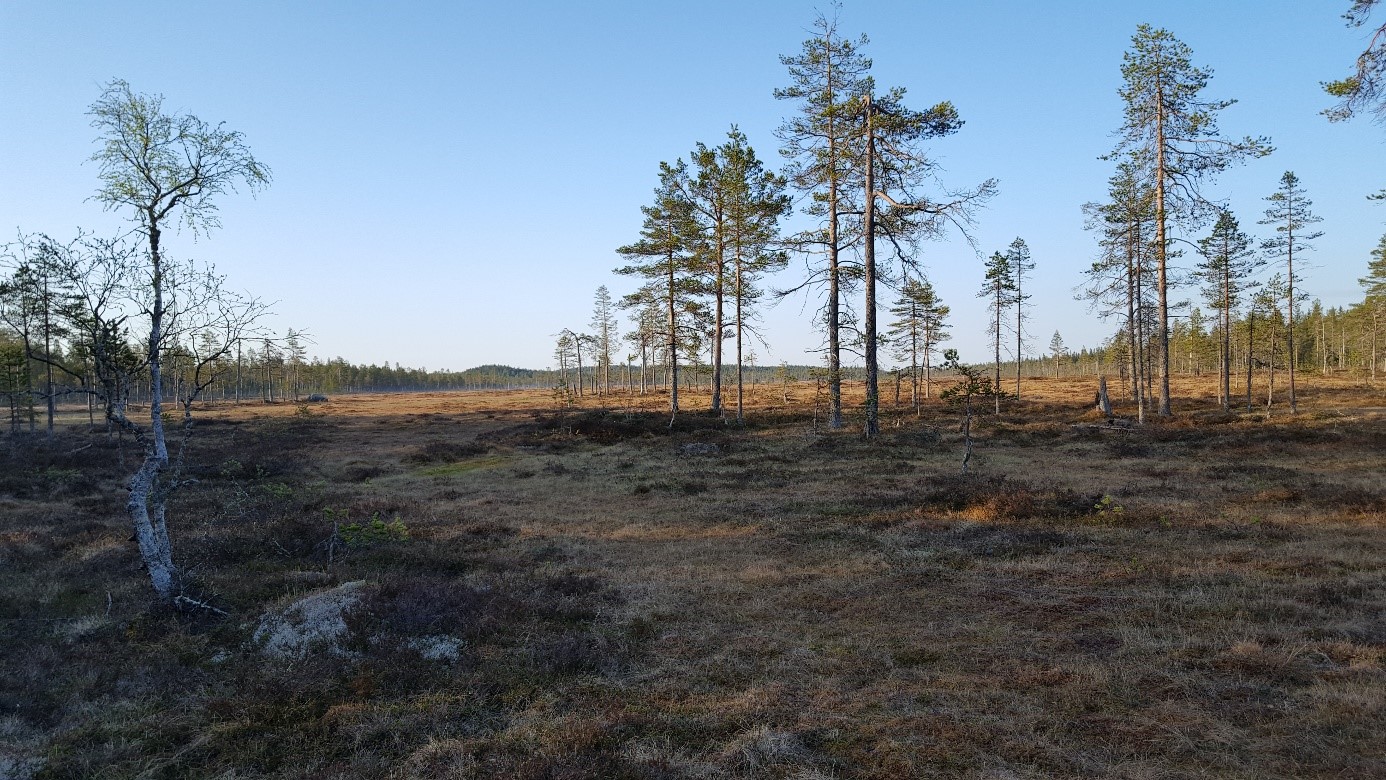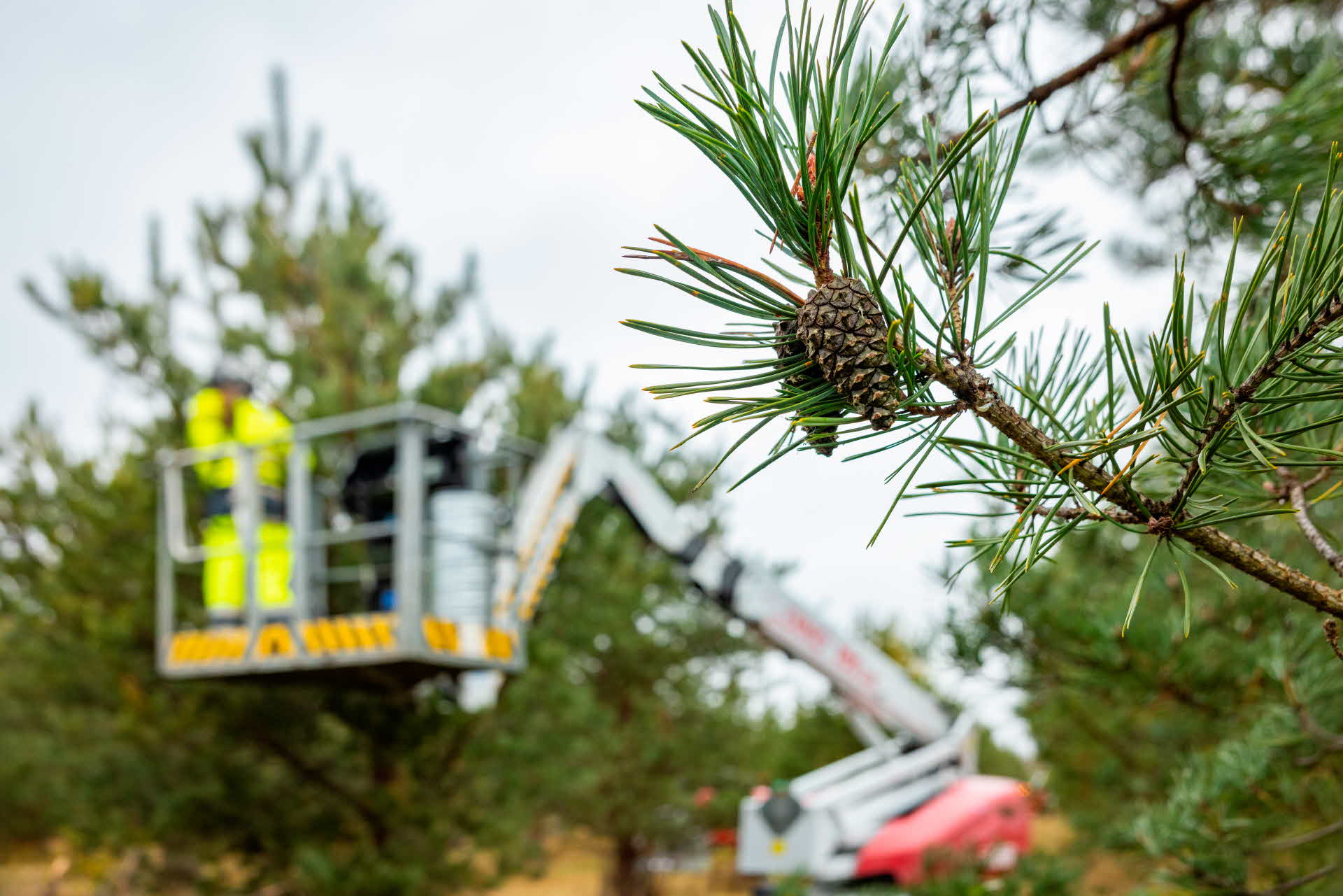
Forests of the future begins with cone picking
- News
- Forest
Every fourth seedling planted in Sweden comes from SCA’s tree nurseries. And to get seedlings, you need seeds – lots of seeds. SCA therefore has several fully owned and part-owned seed cultures around Sweden, from which cones are harvested each year. “Our business year begins with cone picking,” says Ove Einberg, at NorrPlant and responsible for SCA’s seed cultures.
“Only the best possible seed is good enough,” is written in a SCA brochure from 1958, which describes the SCA’s pine seed cuktures at that time. It’s a slogan that still holds true today, according to Ove.
“That’s right. If we are to produce seedlings of good quality and high growth rate, we need the best possible seed material adapted to different regional growing conditions. This is why we have seed cuktures in various locations across both northern and southern Sweden for spruce, pine, and lodgepole pine.”
Many liters of cones
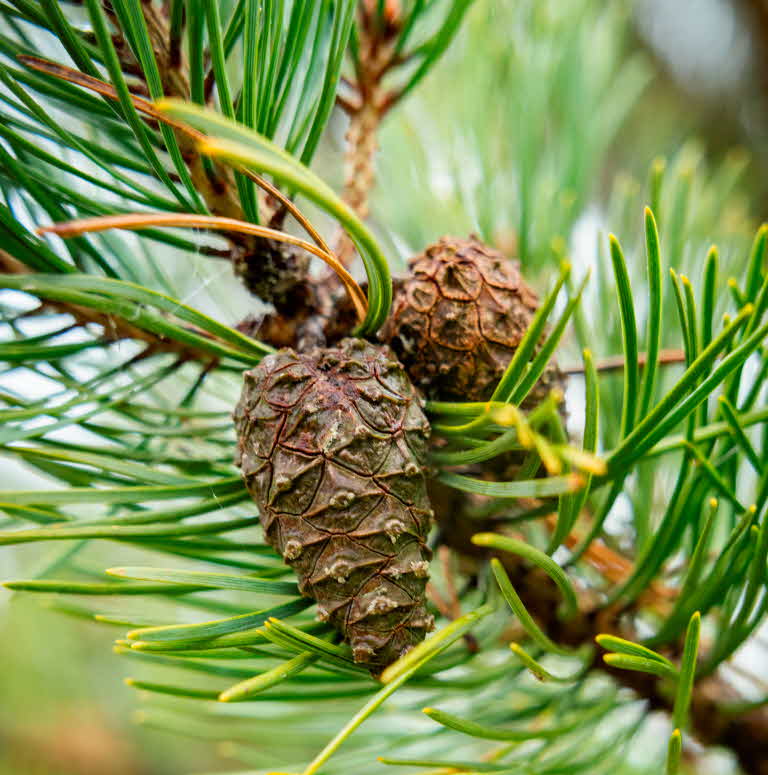
To produce half a kilo of seeds, you need about 100 liters of cones. Each year, NorrPlant collects around 100,000 liters of cones to meet SCA’s annual seedling production of approximately 110 million seedlings.
“The pine and lodgepole pine cuktures often yield good harvests every year. Spruce, however, is a bit more challenging because it doesn’t bloom as frequently. But in those year it does bloom, we can get a lot of seeds. We can freeze seeds and keep them in stock, and we also purchase some seeds,” explains Ove.
One of SCA’s pine seed culture is called Skeppsholmen and is located next to Sundsvall-Timrå Airport. On the 12-hectare area, there are approximately 3,800 pines in long rows, but they don’t quite look like the pines you see in the forest.
“They are more shrub-like because we top and prune the trees regularly to make picking easier and to promote the growth of cones,” explains Ove. “These trees are also not real trees but so-called grafts.”
Breeding the best trees
Producing the right seeds and the right trees is an art in itself, where grafting plays a central role. Today’s tree breeding dates back to the 1940s when researchers realized that forestry had much to learn from agriculture, which had been working on breeding for thousands of years to increase growth and quality of various crops.
It started with selecting the very best trees. Then, seedlings were raised from their seeds and the offspring were planted in test areas to monitor how they were coping. The test areas have different conditions regarding climate and other factors. Some trees thrive better in one environment but worse in another.
“To get many specimens of the selected trees, they are grafted onto ‘ordinary seedlings,’ just as you do when grafting apple trees. They are then placed in seed cultures. When the grafts grow into trees and start to bloom, they naturally cross-pollinate with each other, although there is also some background pollination from the surrounding forest,” explains Anders Tolblad, group leader for seeds and sowing at NorrPlant.
It takes about 20 years to produce one generation of seeds, from the selection of parent trees until seeds are available.
“Today, we can offer seeds from third-generation seed cultures, which means that these seedlings produce forests that grow 25 percent better than non-bred trees. Last year, we established our first seed orchard for fourth-generation seeds,” says Anders.
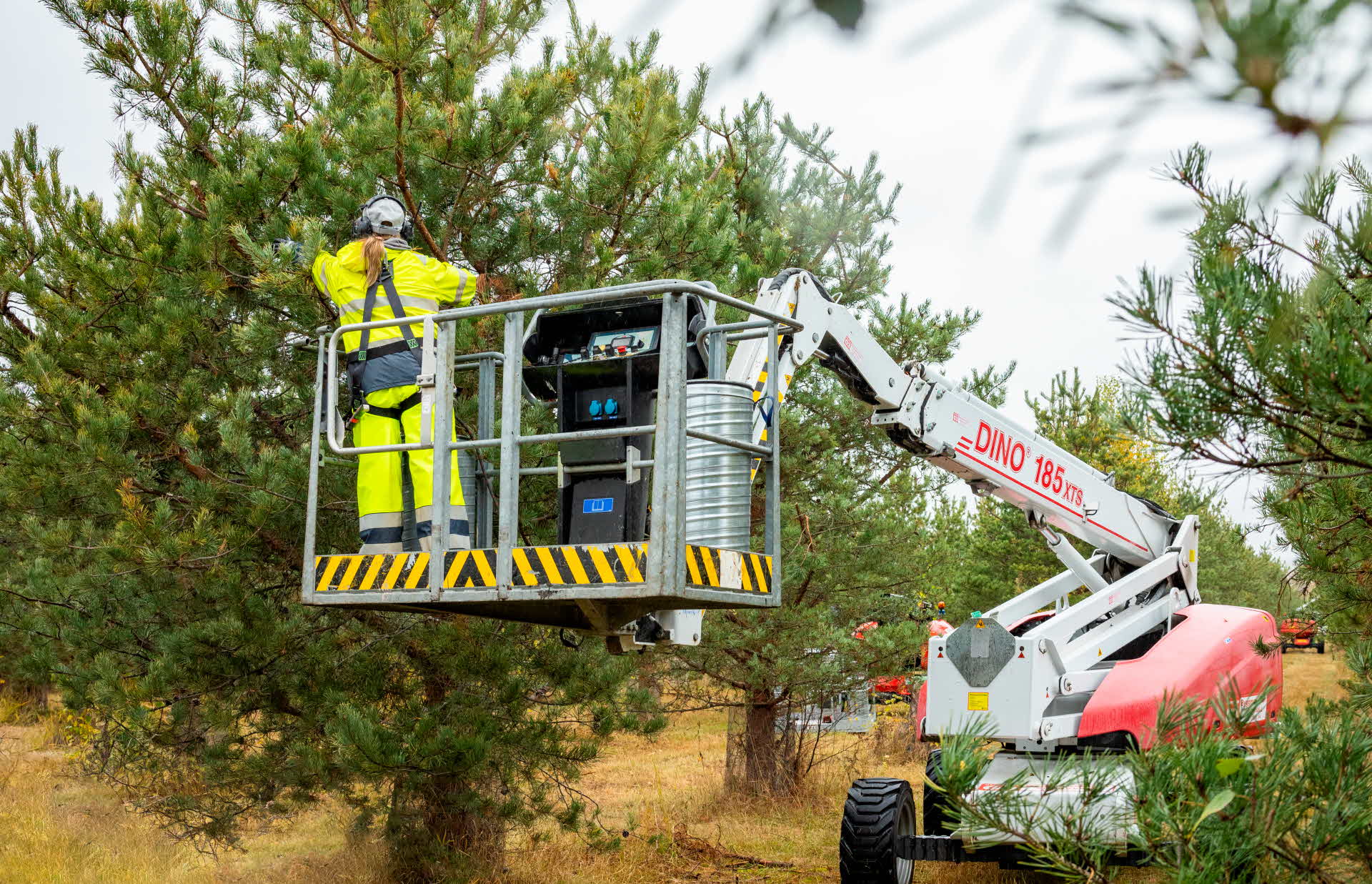
A lot of work
Managing seed orchards takes more time than you might think.
“Pruning and topping the trees takes time. Then we clear away brush and other vegetation around all the trees and monitor the vole protection along the trunks. We also need to ensure that the fences around the orchards keep out hungry moose,” says Ove.
At the Skeppsholmen seed culture, the rain has started to fall, but it doesn’t affect the four NorrPlant employees who are getting ready to pick cones from their cherry pickers.
“We have both our own staff and contractors picking cones. We start in September and continue into November. Cone picking goes on in all weather conditions except for thunderstorms and strong winds,” says Ove.
The best job
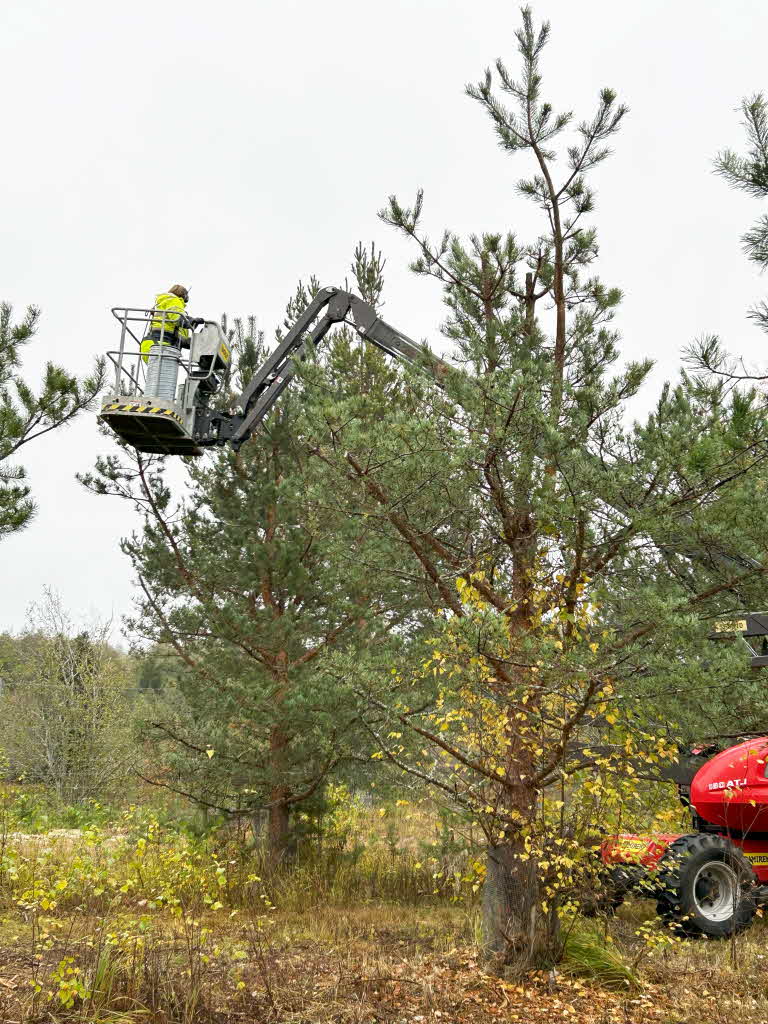
In a sky lift at the edge of the rows of trees, Sofia Lindgren expertly maneuvers the controls to bring the basket close to the cones. She has worked with cone picking every autumn for over ten years and swiftly collects cones, placing them in a large metal tube.
"This is fun, a real favorite job," she says, tossing another handful of cones into the metal container. "I usually work in the sowing hall, but when sowing is done, it's time for cone picking. I enjoy being outside. Most often I listen to murder podcasts while I pick."
Over the years, Sofia has developed a keen eye for cones, as it's essential to distinguish between old, leftover cones and the new ones that shall be picked.
"It's not too difficult because the old ones have opened up more. But when it rains like today, they close themselft, so rain isn't the optimal weather," she says. "It's also good to avoid getting too many needles and branch debris with the cones."
When the metal tubes in the sky lift are full of cones, Sofia empties them into trash cans placed around the trees. The cans are then transported to the Wifstamon tree nursery where the cones are left to ripen in greenhouses before being placed in cold storage and eventually emptied of their seeds.
Strict controls
All seed and plant breeding are conducted under strict controls. The main responsibility lies with Skogforsk, the forestry research institute, which guides everyone with seed cultures and tree nurseries.
"Quality is incredibly important when it comes to seeds. We always send cone samples to Skogforsk before we start picking. Each seed culture also has its own registration and pedigree letter to keep track of the seed’s origin. Every harvest must also be registered and approved by the Swedish Forest Agency before the seeds can be used for sowing. There are also various plant samples," explains Ove, concluding with:
"It's quite fascinating with the time perspective because the cones and seeds we collect now will produce trees that will be harvested in 80 to 100 years."
Photo: Michael Engman and Misan Lindqvist
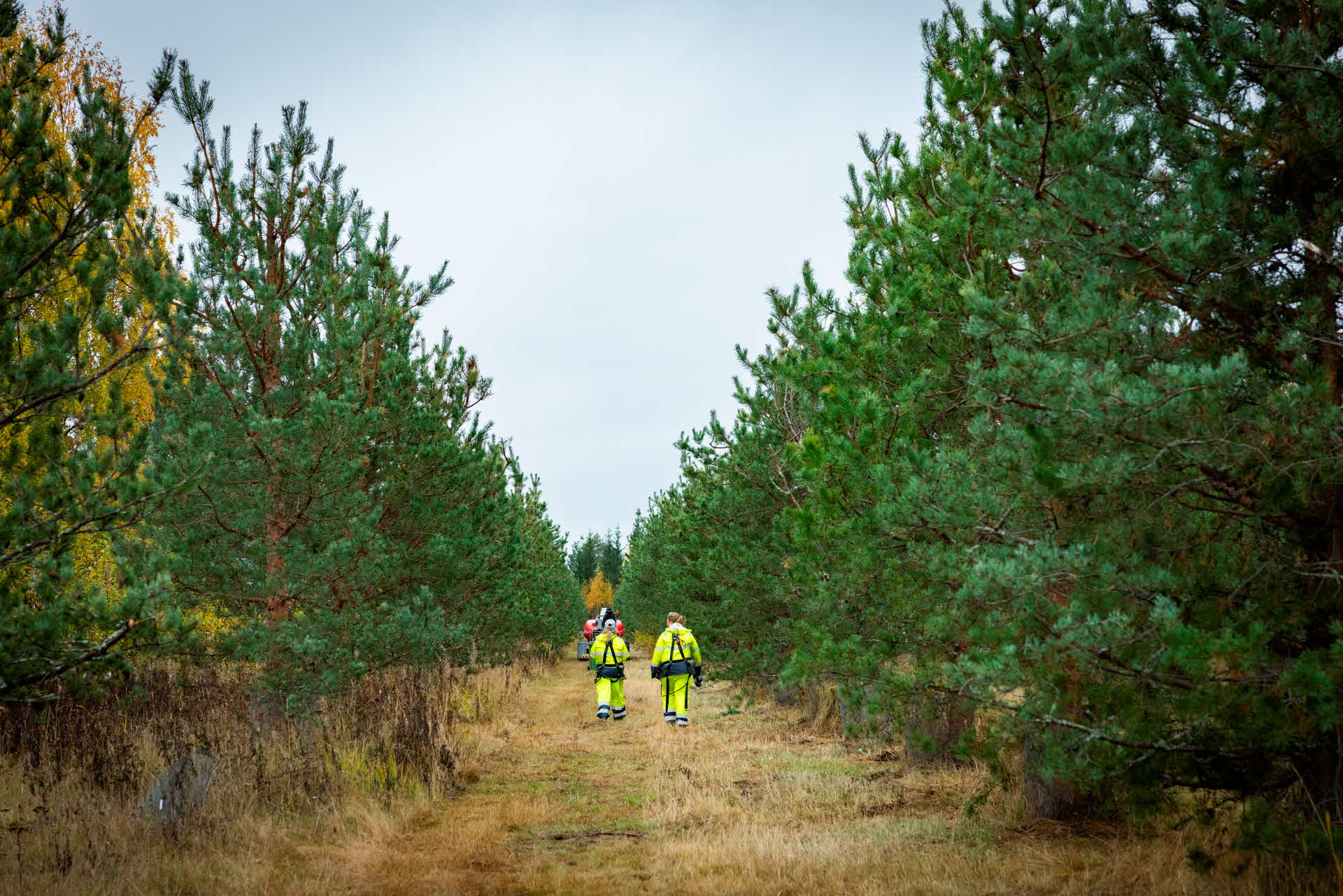
SCA's seed cultures
SCA's have bota fully owned and part- owned active seed cultures.
- Fully owned: 4 for pine, totaling 26 hectares, and 4 for lodgepole pine, totaling 21 hectares.
- Part-owned: 9 for pine and 9 for spruce, totaling 160 + 155 hectares.
SCA is also a part-owner in some seed orchards that are not active or in progress.


